Eggs are a product that you don’t have to argue about. Egg shells as a fertilizer for a garden are an excellent tool, but not everyone knows about it. This storehouse of useful components will help to grow vegetable and fruit products to the envy of all neighbors. How? Let's try to figure it out.
Material Content:
The composition and structure of the eggshell
Calcium "pure" in nature is not common. But the components containing it, represented by bicarbonates and salts formed from them, are a reason for the pride of many products. The content of such components is rich in limestone, chalk. The egg shell is a unique component, 95% consisting of calcium carbonate, which forms its hard shell.
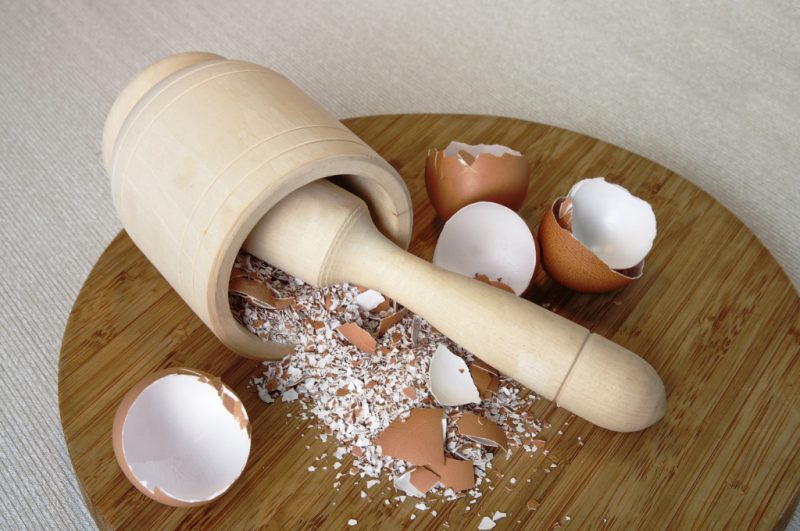
This product contains 27 more elements from the periodic table. Egg shells are rich in magnesium carbonate, magnesium phosphate, potassium, iron, sulfur, and aluminum. If translated into percentages, it will become noticeable that they account for a small proportion, but they will also play their role in improving the quality of the soil.
Organic films abound in the films contained within the eggshell. Mucin and keratin are its most prominent representatives.
What is a useful shell for plants
About the indisputable benefits of egg shells, in whatever form they are used, ground or liquid, our distant ancestors claimed.
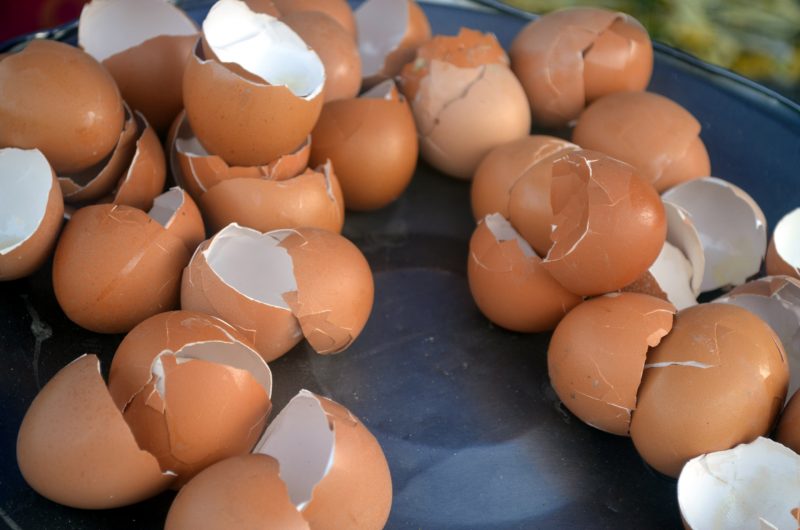
- A unique product deoxidizes the soil. Acidity is generally accepted for fertile soil cover in an indicator of 5.5 - 7.It is only thanks to such conditions that it is possible to ensure the absorption of nutrients by the root system of plants, which is important for processes such as growth and photosynthesis.
An indicator of level 5 warns of excessive acidity and toxicity of the soil. For a number of flora representatives, this is disastrous. It is required to reduce the acidity to about 6. - The soil composition is enriched with minerals.
- The soil becomes looser. Zones occupied by the garden are usually located in clay and heavy in terms of structure areas. On plants, this factor is negatively reflected, because the air is not easy to get to the roots. The result is stagnation of water in the soil, and if the weather changes, the soil cracks and the roots break off. The use of shells leads to the fact that the aeration properties of the soil are improved.
- Culture pests such as the bear, slugs, and moles from the eggshell try to stay as far away as possible. To combat slugs and snails, it is recommended to take this product, previously ground. But shrews, bears and moles are more afraid of such a product, scattered in pieces.
- The unique product is endowed with protective properties against a number of ailments (it fights against top rot, black leg). Especially suitable for tomato seedlings.
What plants are suitable for this fertilizer
Not all plants can take egg shells as a basis to fertilize the soil layer.

Among vegetable and melon products, it is worth stopping attention:
- on pepper, eggplant, tomatoes, carrots, beets, cabbage, potatoes, watermelons, melons;
- such top dressing is especially beneficial for the development of raspberries, apple trees, gooseberries, pears, apricots and viburnum;
- strawberries and strawberries will be to your taste if the soil under these plants is flavored with ground egg shells;
- plants with stone fruits (we are talking about cherries, plums, etc.), can be attributed to the category of especially needy crops in calcium;
- not averse to getting additional calcium legumes, citrus, coniferous and green representatives of the flora.
Egg pieces do an excellent job of draining to place seedlings in disposable cups.
Important! The main thing is not to overdo it with the component, because calcium in excess volumes can damage the plants.
In order to prepare fertilizers, it is better to take shells from eggs of halves or chickens. A product made from turkey or geese eggs can also be used, but it may be difficult to grind it.
We collect and store the shell correctly
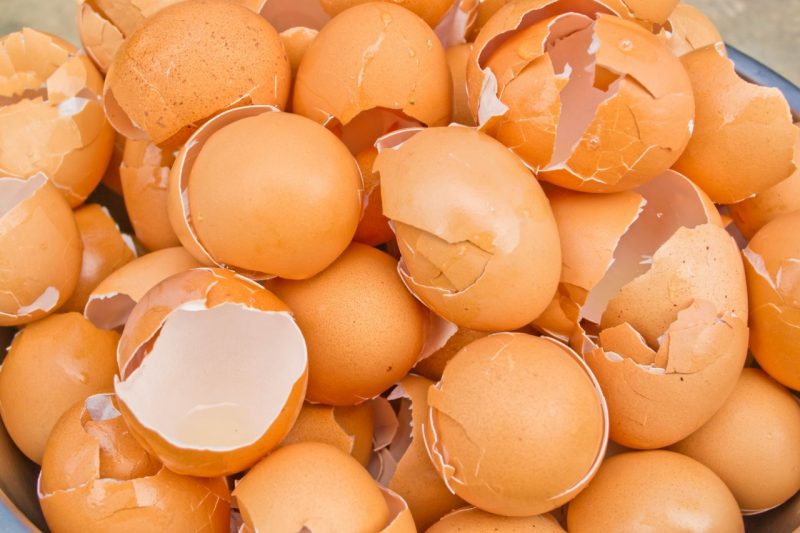
The shell is a moody product in terms of storage. If it is not stored properly, after some time an unpleasant odor will appear. To avoid this, you must adhere to certain rules when collecting and storing the product.
- For washing the collected shells, it is better to use running water. So it will be possible to get rid of particles of organics and the films themselves.
- It is allowed to calcinate the shells in the oven.
If the eggshell is thoroughly dried, then it will be stored for a long time, without changing the smell and appearance. Washing has a significant drawback - most of the useful properties of the shell are lost.
It is interesting:garlic: cultivation and care
Fertilizer manufacturing
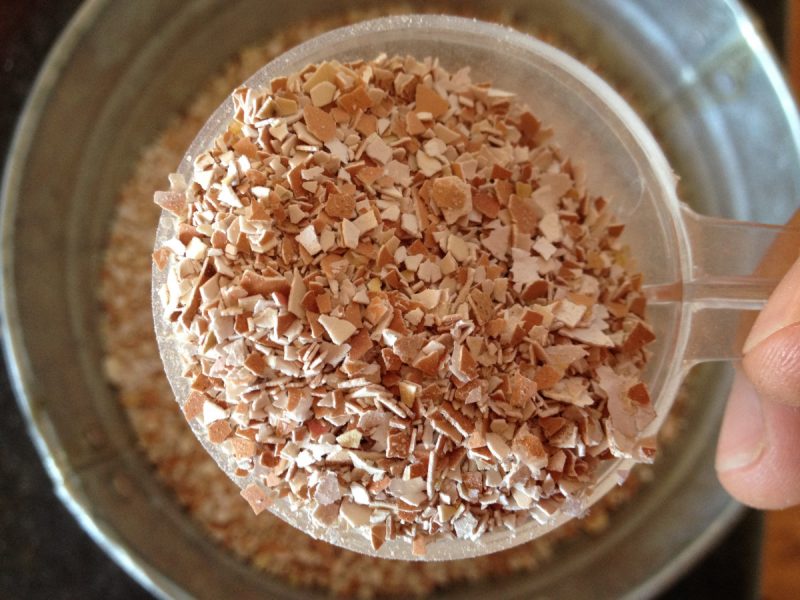
You can prepare valuable fertilizer using the following technology:
- Rinse the shell and dry thoroughly, for which it is laid out on paper, or dried in the oven.
- You can grind the product in a coffee grinder, meat grinder or using a regular mortar. Important! The larger the pieces of the eggshell, the more time will be spent on its decomposition, and, therefore, its useful qualities will reach the soil not so quickly.
- Store the resulting powder optimally in a glass jar.
It may sound strange, but the shell of eggs is used to make liquid fertilizer in the form of tincture.
To obtain it, you need:
- grind thoroughly washed and dried shells;
- Brought to a powdery consistency, the product is poured into a glass container. There is pouring some water. The container with the product is covered with a lid and left for 15 days in a cool, darkened place;
- before using the solution in the garden, it is diluted with ordinary water according to the scheme 1 part of the solution, 3 parts of water.
Such top dressing is often taken to fertilize cabbage, onions, peppers, beets, etc.
How to use eggshell for the benefit of the plant
There are no specific recommendations on how to use eggshells. Someone simply falls asleep the prepared composition on the surface of the soil and covers it with a rake. Soil can be fertilized with such fertilizer both before planting and after it.
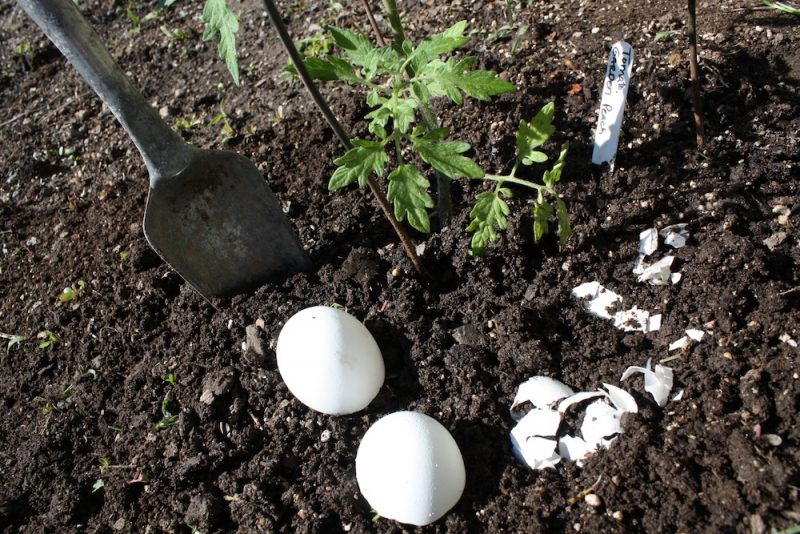
- Of particular benefit can be felt if you add the component into the pits with potatoes and onions.
- As a composition that protects against pests (cruciferous fleas and clutches of butterfly cabbage), as well as minimizing the growth of weeds with a medicinal composition, you can sprinkle soil on top.
- You can use an infusion or decoction made of powder to use for watering crops.
- You can simply scatter the finely crushed shell, but it is much more reasonable to prepare a special design: make uniform holes of a small diameter in a plastic bottle. Through these holes powder will be poured onto the beds.
Important! To preserve all the beneficial properties in the egg shell, the shell film cannot be torn off and thrown away. It is better to make infusions, leaving the film in place.
What plants can be harmed by fertilizer?
Before using eggshell as a fertilizer, it does not hinder to get acquainted with the list of those plants for which such a method does not bode harm.
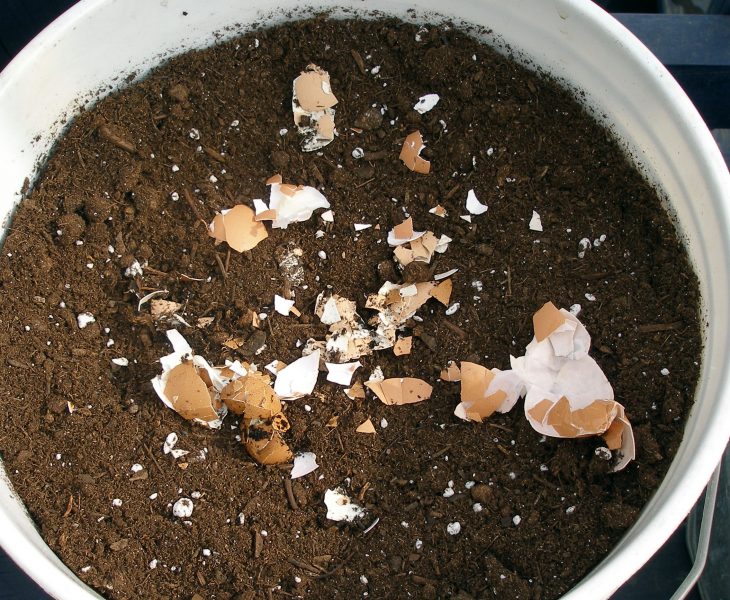
An excess of calcium, primarily with regard to indoor plants, can end in failure. Under attack are violets, azaleas, gloxinia, hydrangea, camellia, and pelargonium. The explanation for this phenomenon is simple: for these representatives of the flora, a comfortable environment is associated with acidic soil.
The use of egg shells as fertilizer for cultivated plants is a justified step. Despite the wide range of useful qualities, the product should be used carefully so as not to harm the plants.












